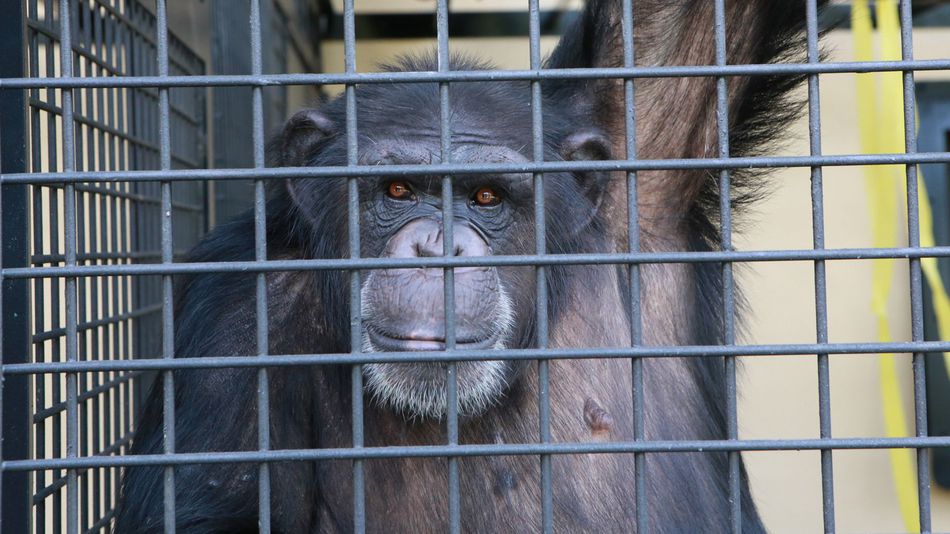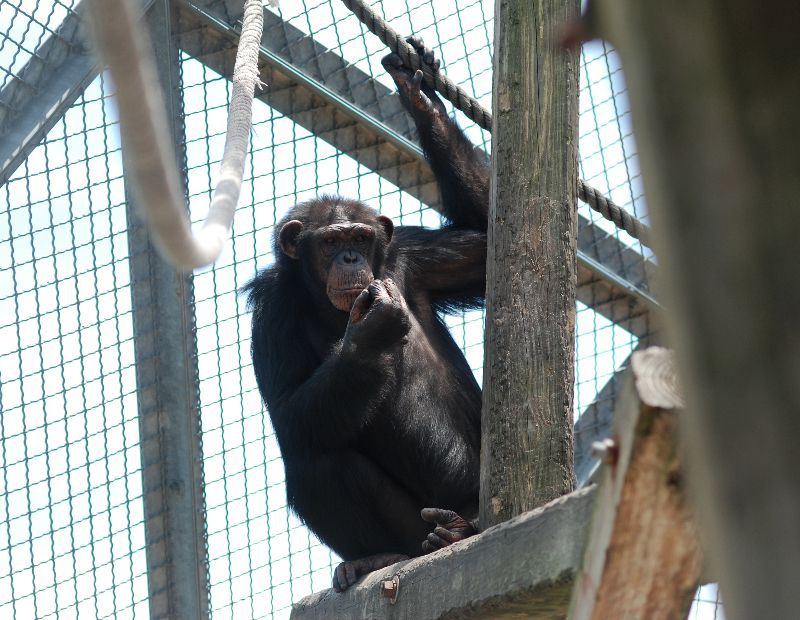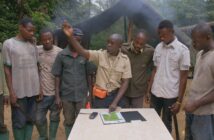A very special all girl group of retired research chimpanzees is living large for the first time in their lives, and if they could sing they would probably be doing a rendition of “You Don’t Own Me,” with slightly more pant-hooting (chimp vocalization). These new beginnings are the direct result of a buildup of years of work to list captive chimpanzees as endangered, and also thanks to NIH declaring that their time using chimps for research was over. Because of this, former lab chimpanzees are finally beginning the process of retirement.
9 New Lives
After spending most of their lives in the New Iberia Research Center in Louisiana, 9 female chimpanzees will finally get the chance to retire, and lead a life outside the confines of biomedical testing. Buttercup, Charisse, Emma, Genesis, Gertrude, Gracie, Jennifer, Latricia and Samira will call Project Chimps’ 236 acre sanctuary their new home. Finally, they can lead healthy and normal lives by interacting and socializing, hopefully, in a more natural and supportive setting.
Project Chimps is headed by Baeckler Davis — a primatologist who was the executive director of North American Primate Sanctuary Alliance (NAPSA) before creating Project Chimps in 2014. The sanctuary is a beacon of proper care for primates, as a group of experts chosen by Davis and trained in chimp behavior will be committed to just that. They provide lifetime care to the chimpanzees that are rescued and provide them with a standard of living that contributes to their emotional, physical and social well being.

image: Project Chimps
No Place Like a New Home
Jane and JGI have been working in collaboration with animal welfare groups for over 25 years to improve the conditions of captive chimpanzees. The real life change for these animals began after captive chimpanzees were officially listed as endangered, along with wild chimps as U.S. Fish and Wildlife Service announced it would grant HSUS legal petition (supported by JGI and other organizations) to end the “split listing.” Following this long awaited shift, NIH went through a process of reflection and within the last three years determined that all biomedical research chimps in their facilities would no longer be used for research and would begin their retirement.
“Congratulations to the Project Chimps team and its partners on this historic achievement for chimpanzees. I am 100% in support, and am so glad this dream is coming true.”
– Dr. Jane Goodall
This is the start of a larger plan that Project Chimps has in partnership with the University of Louisiana at Lafayette to relocate more that 200 of the retired research chimpanzees awaiting freedom after the NIH announcement. Individual care and attention is provided to each chimpanzee, as it is vital that their transition is established based on that particular chimps’ needs. The keepers, trainers and other staff members make sure that they are forming organic, lasting and enriching friendships with the chimpanzees, and that the animals themselves take their own time and pace to open up to their new friends and family. The process is very involved and as we know, the sensitivity that chimpanzees possess can only be matched by our own.

Image: Project Chimps
Leaving Primate Lab Research in the Past
Chimpanzees are an endangered species, both in captivity and in the wild, and their welfare is the responsibility of the global community. These brilliant and beautiful cousins of humans deserve respect and dignity. Treating them in a way that does not allow them to be in a more natural environment with their social and emotional needs taken care of is akin to a lifelong prison sentence for no crime other than being who you are. It is encouraging to see that stories such as these are emerging, as they are reminders that there are people who are working tirelessly to create a good life for captive chimpanzees. It is also a sign that one day, the idea of chimpanzees in any form of lab will be one only found in history books.





